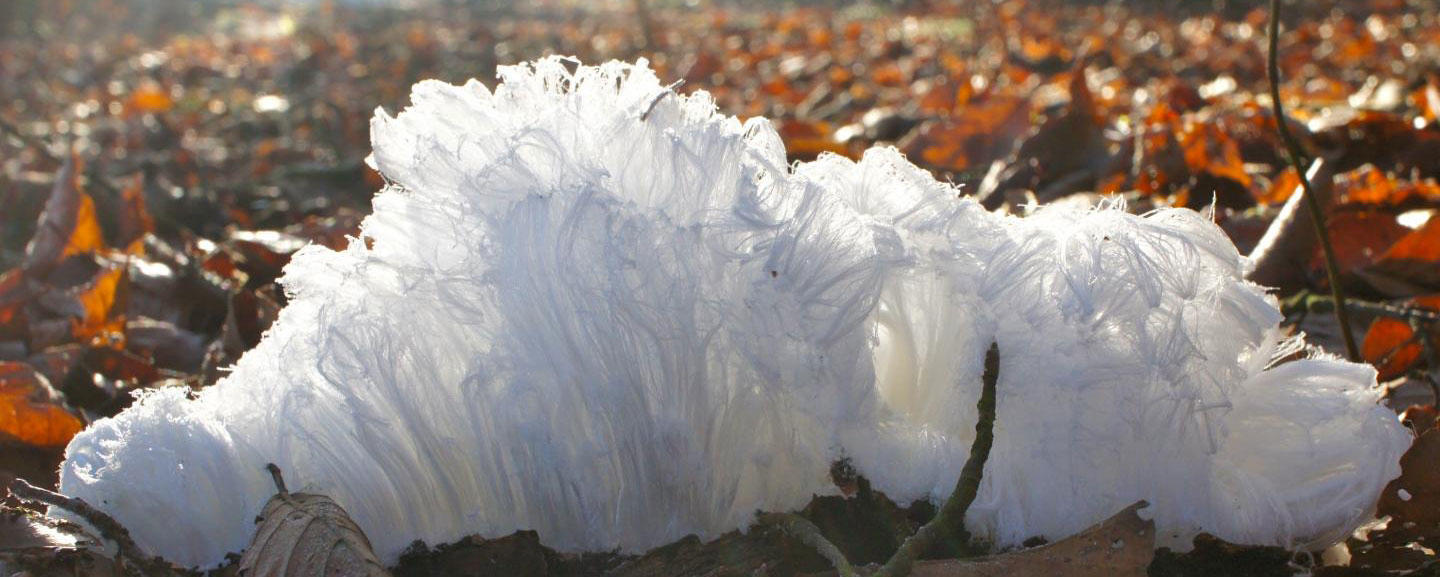Hair ice -- have you heard of it? The rare ice grows upward, forming fine, hair-like filaments that form a glacial toupee of frost atop rotting wood.
"Hair ice grows mostly during the night and melts again when the sun rises. It's invisible in the snow and inconspicuous in hoarfrost," says biologist Gisela Preuss.
Scientists have now filled in a major gap in our understanding of the ice's formation: the fungus Exidiopsis effusa. When the temperature dips below freezing on humid winter evenings, hair ice springs out of rotting tree branches that house E. effusa.
Upon examining samples of melted hair ice, researchers identified the organic compounds lignin and tannin, metabolic byproducts of fungal activity.
"The action of the fungus is to enable the ice to form thin hairs -- with a diameter of about 0.01 mm -- and to keep this shape over many hours at temperatures close to [freezing]," explains Christian Matzler, a physicist at Switzerland's University of Bern. "Our hypothesis includes that the hairs are stabilized by a recrystallization inhibitor that is provided by the fungus."
Hair ice has been the focus of scientific investigation since 1918; it took nearly a century to understand fully because the phenomenon is so rare.

No comments:
Post a Comment